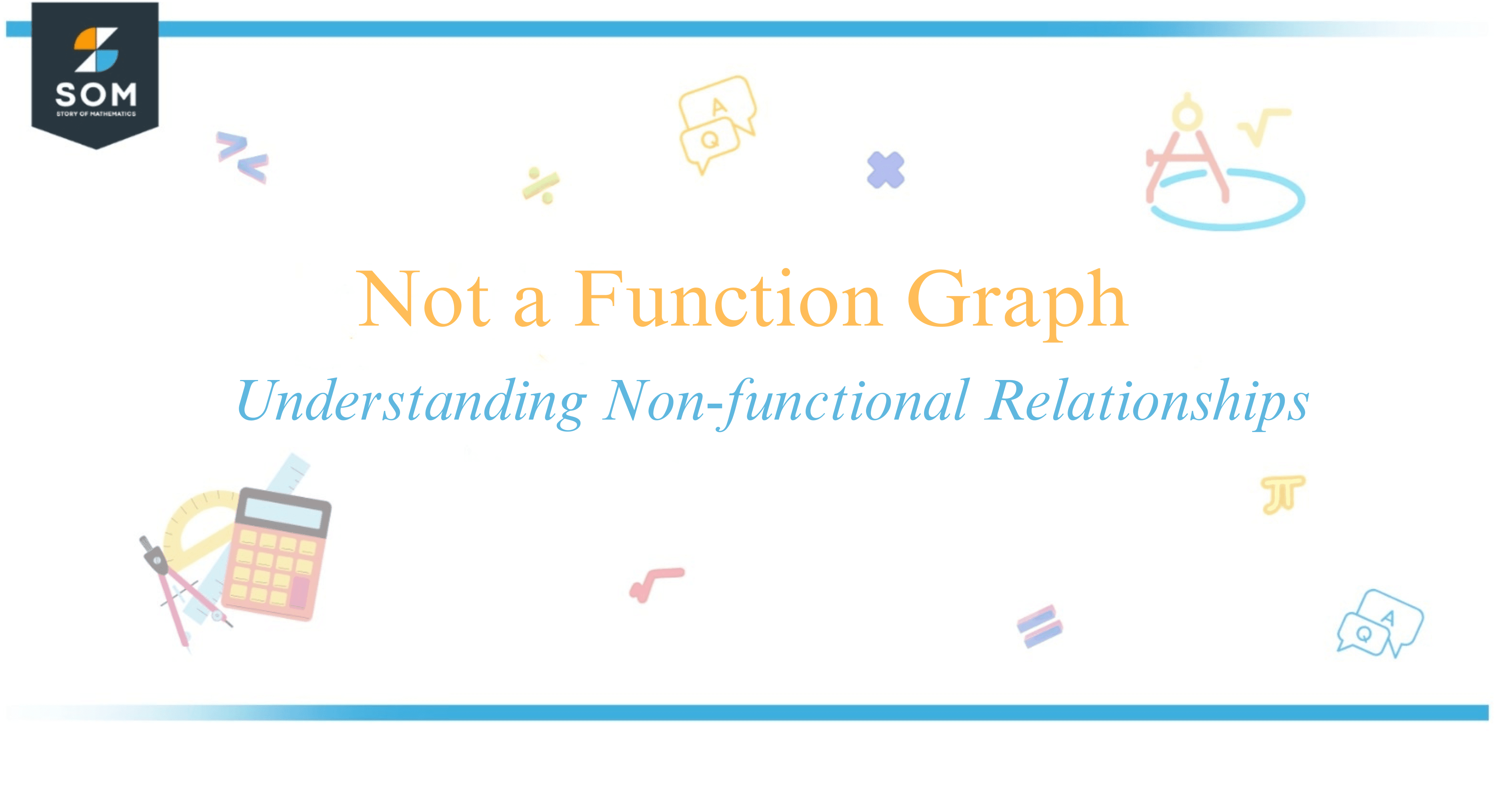
A graph that does not represent a function shows that for at least one input from the domain, there are multiple outputs in the range.
I understand that when we talk about functions in mathematics, we’re referring to a special kind of relation between sets that pairs each element of a domain to exactly one element of the range.
As we visualize this concept with a graph, we can quickly assess whether a relation is a function by applying the vertical line test. If a vertical line intersects the graph at more than one point at any place, then the relation depicted by the graph is not a function.
To determine this visually, I often draw imaginary vertical lines across the graph. If any of these lines meet the graph at more than one point, it indicates that the same input corresponds to more than one output, violating the definition of a function.
This method is an excellent firsthand check before diving into more complicated characteristics of the graph.
Understanding the distinctions between functions and non-functions is a keystroke in the grand composition of mathematical concepts.
By mastering this, I open up a world of understanding about how variables interact and lay the foundation for exploring more complex mathematical relationships. Stay tuned as I explore what makes a graph not represent a function—intriguing, right?
Not a Function Graph
When evaluating graphs in algebra, I need to determine whether a graph represents a valid function. A basic tool I use for this purpose is the vertical line test.

This involves imagining or drawing vertical lines through the graph. If any vertical line crosses the graph at more than one point, then the graph does not represent a function.
This is because each input variable (or x value) of a function must have a single output variable (or y value).
For example, common toolkit functions such as constant, identity, absolute value, square root, quadratic, cubic, reciprocal, and cube root functions can all be visualized through their graphs.
They represent functions because they pass the vertical line test; every x value has exactly one corresponding y value. A simple line equation like ( y=mx+b ) also represents a function graph.
In contrast, a graph is not a function if there are any x values with more than one function value. This is a vital concept when discussing the domain and range of a function.
The domain includes all possible independent variable inputs, while the range consists of the possible dependent variable outputs.
To identify if these toolkit functions or any graph is a one-to-one function, I use the horizontal line test. If a horizontal line intersects the graph more than once, the function is not one-to-one. A one-to-one function has the feature that not only does each input variable produce a unique output variable, but also each output variable is paired with just one input variable.
| Common Toolkit Functions | Passes Vertical Line Test | Passes Horizontal Line Test |
|---|---|---|
| Constant Function | Yes | Yes |
| Identity Function | Yes | Yes |
| Quadratic Function | Yes | No |
| Cubic Function | Yes | Yes |
| Absolute Value Function | Yes | No |
By applying these tests, I can distinguish between graphs that do and do not represent functions.
Identifying not a Functions Graph
When I explore graphs to determine whether a representation is that of a function or not, I rely on the vertical line test. In simple terms, if any vertical line crosses the graph at more than one point, then the graph does not depict a function. Let’s break this down.
A function is a special type of relation where every input value has a unique output value. Formally, for a function $f$, every input (x) in the domain produces only one output (y) in the range, following the function notation (y = f(x)).
However, not every relation qualifies as a function. If a set of ordered pairs or a graph fails to meet the definition of a function, it’s simply a relation.
The vertical line test is a visual check I use to confirm this: I draw multiple vertical lines through the graph and see how many times they hit the curve.
Here’s a handy table summarizing what the test tells me:
| Vertical Line Intersects Graph | Indicates |
|---|---|
| At exactly one point | The graph is a function |
| At more than one point | The graph is not a function |
Let’s take an example. Consider the equation (y^2=x). If we graph this, we’ll see that for some values of (x), there are two corresponding values of (y). If I draw a vertical line through (x = 1), it cuts the curve at two points, ((1,1)) and ((1,-1)), proving it’s not a function.
So, I keep in mind that identifying a graph of a function is about ensuring that for each input value from the domain, we have exactly one output value in the range. A failure to pass the vertical line test means we’re dealing with just a relation, not a function.
Conclusion
When I examine graphs to determine if they are functions, I rely on a simple yet effective test. The vertical line test is particularly useful; if a vertical line intersects the graph at more than one point at any location, I can confidently say that the graph does not represent a function. This is because a function must assign exactly one output for each input.
I’ve learned that common examples of graphs that are not functions include those of ellipses and rectangles, as these shapes fail the vertical line test at multiple points.
For instance, with an ellipse, which includes the special case of a circle given by the equation $x^2 + y^2 = r^2$, a vertical line will intersect the graph at two points if it’s drawn anywhere except at the very edges of the major axis.
In contrast, a graph that represents a straight line like (y = mx + b) will only be intersected once by a vertical line, confirming that it is indeed a graph of a function.
This knowledge aids me in distinguishing between functional and non-functional relationships and is part of the foundational concepts of algebra and calculus.
Understanding these distinctions is crucial because it impacts how I interpret graphs and ensures the correct application of mathematical concepts, be it in pure mathematics or applied fields like cryptography where elliptic curves (not functions) play a significant role.
